#FPGA prototyping
Explore tagged Tumblr posts
Note
What are some of the coolest computer chips ever, in your opinion?
Hmm. There are a lot of chips, and a lot of different things you could call a Computer Chip. Here's a few that come to mind as "interesting" or "important", or, if I can figure out what that means, "cool".
If your favourite chip is not on here honestly it probably deserves to be and I either forgot or I classified it more under "general IC's" instead of "computer chips" (e.g. 555, LM, 4000, 7000 series chips, those last three each capable of filling a book on their own). The 6502 is not here because I do not know much about the 6502, I was neither an Apple nor a BBC Micro type of kid. I am also not 70 years old so as much as I love the DEC Alphas, I have never so much as breathed on one.
Disclaimer for writing this mostly out of my head and/or ass at one in the morning, do not use any of this as a source in an argument without checking.
Intel 3101
So I mean, obvious shout, the Intel 3101, a 64-bit chip from 1969, and Intel's first ever product. You may look at that, and go, "wow, 64-bit computing in 1969? That's really early" and I will laugh heartily and say no, that's not 64-bit computing, that is 64 bits of SRAM memory.
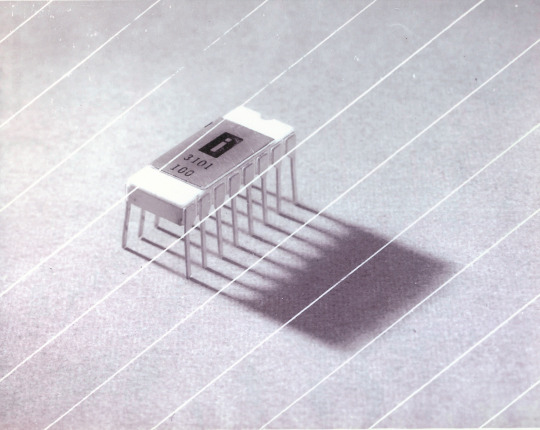

This one is cool because it's cute. Look at that. This thing was completely hand-designed by engineers drawing the shapes of transistor gates on sheets of overhead transparency and exposing pieces of crudely spun silicon to light in a """"cleanroom"""" that would cause most modern fab equipment to swoon like a delicate Victorian lady. Semiconductor manufacturing was maturing at this point but a fab still had more in common with a darkroom for film development than with the mega expensive building sized machines we use today.
As that link above notes, these things were really rough and tumble, and designs were being updated on the scale of weeks as Intel learned, well, how to make chips at an industrial scale. They weren't the first company to do this, in the 60's you could run a chip fab out of a sufficiently well sealed garage, but they were busy building the background that would lead to the next sixty years.
Lisp Chips
This is a family of utterly bullshit prototype processors that failed to be born in the whirlwind days of AI research in the 70's and 80's.
Lisps, a very old but exceedingly clever family of functional programming languages, were the language of choice for AI research at the time. Lisp compilers and interpreters had all sorts of tricks for compiling Lisp down to instructions, and also the hardware was frequently being built by the AI researchers themselves with explicit aims to run Lisp better.
The illogical conclusion of this was attempts to implement Lisp right in silicon, no translation layer.
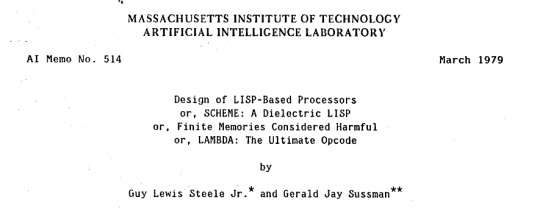
Yeah, that is Sussman himself on this paper.
These never left labs, there have since been dozens of abortive attempts to make Lisp Chips happen because the idea is so extremely attractive to a certain kind of programmer, the most recent big one being a pile of weird designd aimed to run OpenGenera. I bet you there are no less than four members of r/lisp who have bought an Icestick FPGA in the past year with the explicit goal of writing their own Lisp Chip. It will fail, because this is a terrible idea, but damn if it isn't cool.
There were many more chips that bridged this gap, stuff designed by or for Symbolics (like the Ivory series of chips or the 3600) to go into their Lisp machines that exploited the up and coming fields of microcode optimization to improve Lisp performance, but sadly there are no known working true Lisp Chips in the wild.
Zilog Z80
Perhaps the most important chip that ever just kinda hung out. The Z80 was almost, almost the basis of The Future. The Z80 is bizzare. It is a software compatible clone of the Intel 8080, which is to say that it has the same instructions implemented in a completely different way.
This is, a strange choice, but it was the right one somehow because through the 80's and 90's practically every single piece of technology made in Japan contained at least one, maybe two Z80's even if there was no readily apparent reason why it should have one (or two). I will defer to Cathode Ray Dude here: What follows is a joke, but only barely

The Z80 is the basis of the MSX, the IBM PC of Japan, which was produced through a system of hardware and software licensing to third party manufacturers by Microsoft of Japan which was exactly as confusing as it sounds. The result is that the Z80, originally intended for embedded applications, ended up forming the basis of an entire alternate branch of the PC family tree.
It is important to note that the Z80 is boring. It is a normal-ass chip but it just so happens that it ended up being the focal point of like a dozen different industries all looking for a cheap, easy to program chip they could shove into Appliances.
Effectively everything that happened to the Intel 8080 happened to the Z80 and then some. Black market clones, reverse engineered Soviet compatibles, licensed second party manufacturers, hundreds of semi-compatible bastard half-sisters made by anyone with a fab, used in everything from toys to industrial machinery, still persisting to this day as an embedded processor that is probably powering something near you quietly and without much fuss. If you have one of those old TI-86 calculators, that's a Z80. Oh also a horrible hybrid Z80/8080 from Sharp powered the original Game Boy.
I was going to try and find a picture of a Z80 by just searching for it and look at this mess! There's so many of these things.
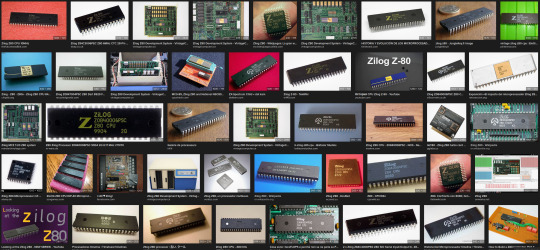
I mean the C/PM computers. The ZX Spectrum, I almost forgot that one! I can keep making this list go! So many bits of the Tech Explosion of the 80's and 90's are powered by the Z80. I was not joking when I said that you sometimes found more than one Z80 in a single computer because you might use one Z80 to run the computer and another Z80 to run a specialty peripheral like a video toaster or music synthesizer. Everyone imaginable has had their hand on the Z80 ball at some point in time or another. Z80 based devices probably launched several dozen hardware companies that persist to this day and I have no idea which ones because there were so goddamn many.
The Z80 eventually got super efficient due to process shrinks so it turns up in weird laptops and handhelds! Zilog and the Z80 persist to this day like some kind of crocodile beast, you can go to RS components and buy a brand new piece of Z80 silicon clocked at 20MHz. There's probably a couple in a car somewhere near you.
Pentium (P6 microarchitecture)
Yeah I am going to bring up the Hackers chip. The Pentium P6 series is currently remembered for being the chip that Acidburn geeks out over in Hackers (1995) instead of making out with her boyfriend, but it is actually noteworthy IMO for being one of the first mainstream chips to start pulling serious tricks on the system running it.

The P6 microarchitecture comes out swinging with like four or five tricks to get around the numerous problems with x86 and deploys them all at once. It has superscalar pipelining, it has a RISC microcode, it has branch prediction, it has a bunch of zany mathematical optimizations, none of these are new per se but this is the first time you're really seeing them all at once on a chip that was going into PC's.
Without these improvements it's possible Intel would have been beaten out by one of its competitors, maybe Power or SPARC or whatever you call the thing that runs on the Motorola 68k. Hell even MIPS could have beaten the ageing cancerous mistake that was x86. But by discovering the power of lying to the computer, Intel managed to speed up x86 by implementing it in a sensible instruction set in the background, allowing them to do all the same clever pipelining and optimization that was happening with RISC without having to give up their stranglehold on the desktop market. Without the P5 we live in a very, very different world from a computer hardware perspective.
From this falls many of the bizzare microcode execution bugs that plague modern computers, because when you're doing your optimization on the fly in chip with a second, smaller unix hidden inside your processor eventually you're not going to be cryptographically secure.
RISC is very clearly better for, most things. You can find papers stating this as far back as the 70's, when they start doing pipelining for the first time and are like "you know pipelining is a lot easier if you have a few small instructions instead of ten thousand massive ones.
x86 only persists to this day because Intel cemented their lead and they happened to use x86. True RISC cuts out the middleman of hyperoptimizing microcode on the chip, but if you can't do that because you've girlbossed too close to the sun as Intel had in the late 80's you have to do something.
The Future
This gets us to like the year 2000. I have more chips I find interesting or cool, although from here it's mostly microcontrollers in part because from here it gets pretty monotonous because Intel basically wins for a while. I might pick that up later. Also if this post gets any longer it'll be annoying to scroll past. Here is a sample from a post I have in my drafts since May:

I have some notes on the weirdo PowerPC stuff that shows up here it's mostly interesting because of where it goes, not what it is. A lot of it ends up in games consoles. Some of it goes into mainframes. There is some of it in space. Really got around, PowerPC did.
237 notes
·
View notes
Text
Hell is terms like ASIC, FPGA, and PPU
I haven't been doing any public updates on this for a bit, but I am still working on this bizarre rabbit hole quest of designing my own (probably) 16-bit game console. The controller is maybe done now, on a design level. Like I have parts for everything sourced and a layout for the internal PCB. I don't have a fully tested working prototype yet because I am in the middle of a huge financial crisis and don't have the cash laying around to send out to have boards printed and start rapidly iterating design on the 3D printed bits (housing the scroll wheel is going to be a little tricky). I should really spend my creative energy focusing on software development for a nice little demo ROM (or like, short term projects to earn money I desperately need) but my brain's kinda stuck in circuitry gear so I'm thinking more about what's going into the actual console itself. This may get techie.
So... in the broadest sense, and I think I've mentioned this before, I want to make this a 16-bit system (which is a term with a pretty murky definition), maybe 32-bit? And since I'm going to all this trouble I want to give my project here a little something extra the consoles from that era didn't have. And at the same time, I'd like to be able to act as a bridge for the sort of weirdos who are currently actively making new games for those systems to start working on this, on a level of "if you would do this on this console with this code, here's how you would do it on mine." This makes for a hell of a lot of research on my end, but trust me, it gets worse!
So let's talk about the main strengths of the 2D game consoles everyone knows and loves. Oh and just now while looking for some visual aids maybe I stumbled across this site, which is actually great as a sort of mid-level overview of all this stuff. Short version though-
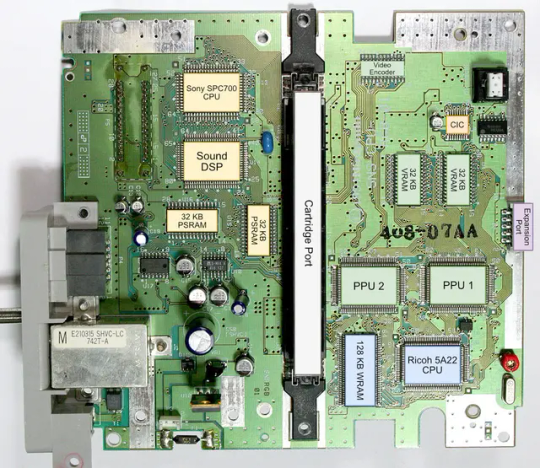
The SNES (or Super Famicom) does what it does by way of a combination of really going all in on direct memory access, and particularly having a dedicated setup for doing so between scanlines, coupled with a bunch of dedicated graphical modes specialized for different use cases, and you know, that you can switch between partway through drawing a screen. And of course the feature everyone knows and loves where you can have one polygon and do all sorts of fun things with it.
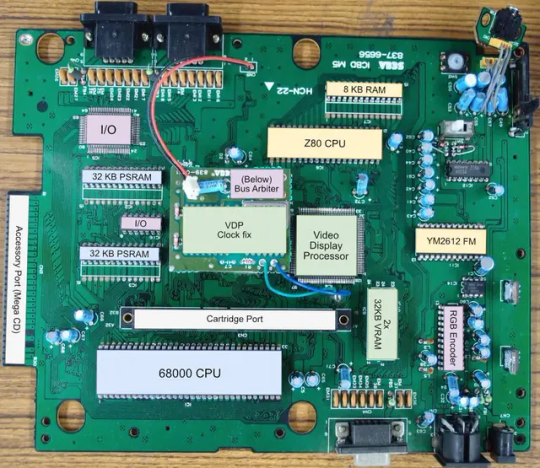
The Genesis (or Megadrive) has an actual proper 16-bit processor instead of this weird upgraded 6502 like the SNES had for a scrapped backwards compatibility plan. It also had this frankly wacky design where they just kinda took the guts out of a Sega Master System and had them off to the side as a segregated system whose only real job is managing the sound chip, one of those good good Yamaha synths with that real distinct sound... oh and they also actually did have a backwards compatibility deal that just kinda used the audio side to emulate an SMS, basically.
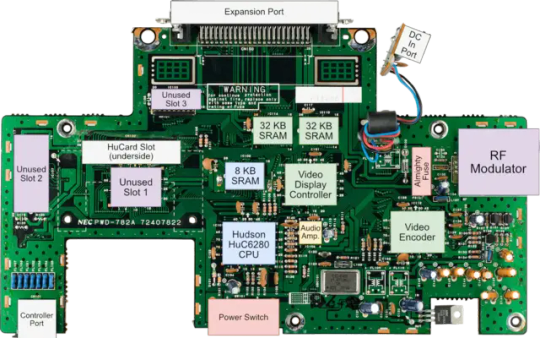
The TurboGrafix-16 (or PC Engine) really just kinda went all-in on making its own custom CPU from scratch which...we'll get to that, and otherwise uh... it had some interesting stuff going on sound wise? I feel like the main thing it had going was getting in on CDs early but I'm not messing with optical drives and they're no longer a really great storage option anyway.
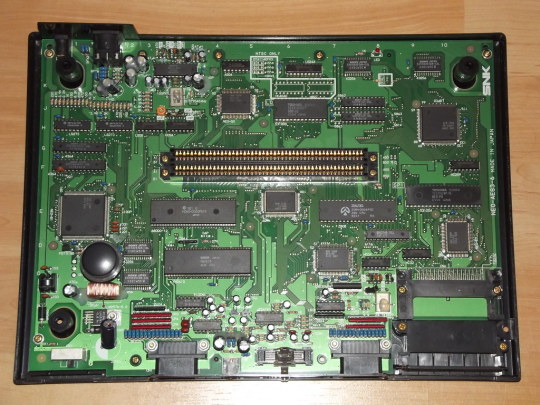
Then there's the Neo Geo... where what's going on under the good is just kind of A LOT. I don't have the same handy analysis ready to go on this one, but my understanding is it didn't really go in for a lot of nice streamlining tricks and just kinda powered through. Like it has no separation of background layers and sprites. It's just all sprites. Shove those raw numbers.
So what's the best of all worlds option here? I'd like to go with one of them nice speedy Motorolla processors. The 68000 the Genesis used is no longer manufactured though. The closest still-in-production equivalent would be the 68SEC000 family. Seems like they go for about $15 a pop, have a full 32-bit bus, low voltage, some support clock speeds like... three times what the Genesis did. It's overkill, but should remove any concerns I have about having a way higher resolution than the systems I'm jumping off from. I can also easily throw in some beefy RAM chips where I need.
I was also planning to just directly replicate the Genesis sound setup, weird as it is, but hit the slight hiccup that the Z80 was JUST discontinued, like a month or two ago. Pretty sure someone already has a clone of it, might use that.
Here's where everything comes to a screeching halt though. While the makers of all these systems were making contracts for custom processors to add a couple extra features in that I should be able to work around by just using newer descendant chips that have that built in, there really just is no off the shelf PPU that I'm aware of. EVERYONE back in the day had some custom ASIC (application-specific integrated circuit) chip made to assemble every frame of video before throwing it at the TV. Especially the SNES, with all its modes changing the logic there and the HDMA getting all up in those mode 7 effects. Which are again, something I definitely want to replicate here.
So one option here is... I design and order my own ASIC chips. I can probably just fit the entire system in one even? This however comes with two big problems. It's pricy. Real pricy. Don't think it's really practical if I'm not ordering in bulk and this is a project I assume has a really niche audience. Also, I mean, if I'm custom ordering a chip, I can't really rationalize having stuff I could cram in there for free sitting outside as separate costly chips, and hell, if it's all gonna be in one package I'm no longer making this an educational electronics kit/console, so I may as well just emulate the whole thing on like a raspberry pi for a tenth of the cost or something.
The other option is... I commit to even more work, and find a way to reverse engineer all the functionality I want out with some big array of custom ROMs and placeholder RAM and just kinda have my own multi-chip homebrew co-processors? Still PROBABLY cheaper than the ASIC solution and I guess not really making more research work for myself. It's just going to make for a bigger/more crowded motherboard or something.
Oh and I'm now looking at a 5V processor and making controllers compatible with a 10V system so I need to double check that all the components in those don't really care that much and maybe adjust things.
And then there's also FPGAs (field programmable gate arrays). Even more expensive than an ASIC, but the advantage is it's sort of a chip emulator and you can reflash it with something else. So if you're specifically in the MiSTer scene, I just host a file somewhere and you make the one you already have pretend to be this system. So... good news for those people but I still need to actually build something here.
So... yeah that's where all this stands right now. I admit I'm in way way over my head, but I should get somewhere eventually?
11 notes
·
View notes
Text
Beginner's learning to understand Xilinx product series including Zynq-7000, Artix, Virtex, etc.
Xilinx (Xilinx) as the world's leading supplier of programmable logic devices has always been highly regarded for its excellent technology and innovative products. Xilinx has launched many excellent product series, providing a rich variety of choices for different application needs.

I. FPGA Product Series
Xilinx's FPGA products cover multiple series, each with its own characteristics and advantages.
The Spartan series is an entry-level product with low price, power consumption, and small size. It uses a small package and provides an excellent performance-power ratio. It also contains the MicroBlaze™ soft processor and supports DDR3 memory. It is very suitable for industrial, consumer applications, and automotive applications, such as small controllers in industrial automation, simple logic control in consumer electronics, and auxiliary control modules in automotive electronics.
The Artix series, compared to the Spartan series, adds serial transceivers and DSP functions and has a larger logic capacity. It achieves a good balance between cost and performance and is suitable for mid-to-low-end applications with slightly more complex logic, such as software-defined radios, machine vision, low-end wireless backhaul, and embedded systems that are cost-sensitive but require certain performance.
The Kintex series is a mid-range series that performs excellently in terms of the number of hard cores and logic capacity. It achieves an excellent cost/performance/power consumption balance for designs at the 28nm node, provides a high DSP rate, cost-effective packaging, and supports mainstream standards such as PCIe® Gen3 and 10 Gigabit Ethernet. It is suitable for application scenarios such as data centers, network communications, 3G/4G wireless communications, flat panel displays, and video transmission.
The Virtex series, as a high-end series, has the highest performance and reliability. It has a large number of logic units, high-bandwidth serial transceivers, strong DSP processing capabilities, and rich storage resources, and can handle complex calculations and data streams. It is often used in application fields with extremely high performance requirements such as 10G to 100G networking, portable radars, ASIC prototyping, high-end military communications, and high-speed signal processing.

II. Zynq Product Series
The Zynq - 7000 series integrates ARM and FPGA programmable logic to achieve software and hardware co-design. It provides different models with different logic resources, storage capacities, and interface numbers to meet different application needs. The low-power consumption characteristic is suitable for embedded application scenarios such as industrial automation, communication equipment, medical equipment, and automotive electronics.
The Zynq UltraScale + MPSoC series has higher performance and more abundant functions, including more processor cores, larger storage capacities, and higher communication bandwidths. It supports multiple security functions and is suitable for applications with high security requirements. It can be used in fields such as artificial intelligence and machine learning, data center acceleration, aerospace and defense, and high-end video processing.
The Zynq UltraScale + RFSoC series is similar in architecture to the MPSoC and also has ARM and FPGA parts. However, it has been optimized and enhanced in radio frequency signal processing and integrates a large number of radio frequency-related modules and functions such as ADC and DAC, which can directly collect and process radio frequency signals, greatly simplifying the design complexity of radio frequency systems. It is mainly applied in radio frequency-related fields such as 5G communication base stations, software-defined radios, and phased array radars.

III. Versal Series
The Versal series is Xilinx's adaptive computing acceleration platform (ACAP) product series.
The Versal Prime series is aimed at a wide range of application fields and provides high-performance computing and flexible programmability. It has high application value in fields such as artificial intelligence, machine learning, data centers, and communications, and can meet application scenarios with high requirements for computing performance and flexibility.
The Versal AI Core series focuses on artificial intelligence and machine learning applications and has powerful AI processing capabilities. It integrates a large number of AI engines and hardware accelerators and can efficiently process various AI algorithms and models, providing powerful computing support for artificial intelligence applications.
The Versal AI Edge series is designed for edge computing and terminal device applications and has the characteristics of low power consumption, small size, and high computing density. It is suitable for edge computing scenarios such as autonomous driving, intelligent security, and industrial automation, and can achieve efficient AI inference and real-time data processing on edge devices.
In short, Xilinx's product series are rich and diverse, covering various application needs from entry-level to high-end. Whether in the FPGA, Zynq, or Versal series, you can find solutions suitable for different application scenarios, making important contributions to promoting the development and innovation of technology.
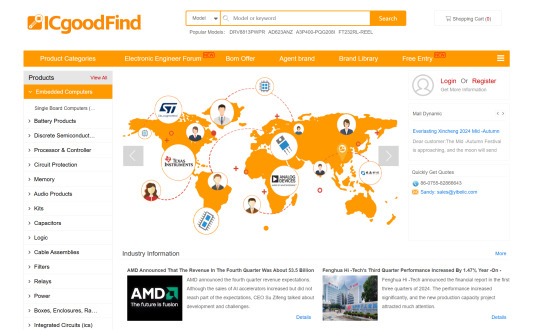
In terms of electronic component procurement, Yibeiic and ICgoodFind are your reliable choices. Yibeiic provides a rich variety of Xilinx products and other types of electronic components. Yibeiic has a professional service team and efficient logistics and distribution to ensure that you can obtain the required products in a timely manner. ICgoodFind is also committed to providing customers with high-quality electronic component procurement services. ICgoodFind has won the trust of many customers with its extensive product inventory and good customer reputation. Whether you are looking for Xilinx's FPGA, Zynq, or Versal series products, or electronic components of other brands, Yibeiic and ICgoodFind can meet your needs.
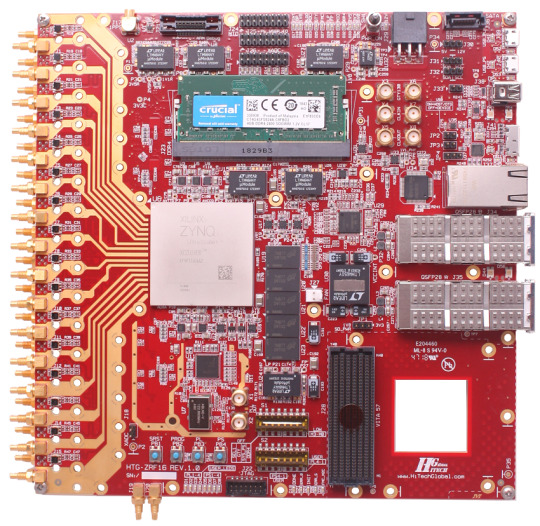
Summary by Yibeiic and ICgoodFind: Xilinx (Xilinx) as an important enterprise in the field of programmable logic devices, its products have wide applications in the electronics industry. As an electronic component supplier, Yibeiic (ICgoodFind) will continue to pay attention to industry trends and provide customers with high-quality Xilinx products and other electronic components. At the same time, we also expect Xilinx to continuously innovate and bring more surprises to the development of the electronics industry. In the process of electronic component procurement, Yibeiic and ICgoodFind will continue to provide customers with professional and efficient services as always.

3 notes
·
View notes
Text
FPGA Market - Exploring the Growth Dynamics

The FPGA market is witnessing rapid growth finding a foothold within the ranks of many up-to-date technologies. It is called versatile components, programmed and reprogrammed to perform special tasks, staying at the fore to drive innovation across industries such as telecommunications, automotive, aerospace, and consumer electronics. Traditional fixed-function chips cannot be changed to an application, whereas in the case of FPGAs, this can be done. This brings fast prototyping and iteration capability—extremely important in high-flux technology fields such as telecommunications and data centers. As such, FPGAs are designed for the execution of complex algorithms and high-speed data processing, thus making them well-positioned to handle the demands that come from next-generation networks and cloud computing infrastructures.
In the aerospace and defense industries, FPGAs have critically contributed to enhancing performance in systems and enhancing their reliability. It is their flexibility that enables the realization of complex signal processing, encryption, and communication systems necessary for defense-related applications. FPGAs provide the required speed and flexibility to meet the most stringent specifications of projects in aerospace and defense, such as satellite communications, radar systems, and electronic warfare. The ever-improving FPGA technology in terms of higher processing power and lower power consumption is fueling demand in these critical areas.
Consumer electronics is another upcoming application area for FPGAs. From smartphones to smart devices, and finally the IoT, the demand for low-power and high-performance computing is on the rise. In this regard, FPGAs give the ability to integrate a wide array of varied functions onto a single chip and help in cutting down the number of components required, thereby saving space and power. This has been quite useful to consumer electronics manufacturers who wish to have state-of-the-art products that boast advanced features and have high efficiency. As IoT devices proliferate, the role of FPGAs in this area will continue to foster innovation.
Growing competition and investments are noticed within the FPGA market, where key players develop more advanced and efficient products. The performance of FPGAs is increased by investing in R&D; the number of features grows, and their cost goes down. This competitive environment is forcing innovation and a wider choice availability for end-users is contributing to the growth of the whole market.
Author Bio -
Akshay Thakur
Senior Market Research Expert at The Insight Partners
2 notes
·
View notes
Text
The Role of FPGA in Enhancing Embedded System Performance
Looking to boost the performance of your embedded systems? Field-Programmable Gate Arrays (FPGAs) are redefining what’s possible. Unlike traditional CPUs or ASICs, FPGAs offer real-time, hardware-level customization, delivering faster processing, lower latency, and unmatched energy efficiency. That makes them a go-to solution for complex, performance-critical applications in the automotive, telecom, healthcare, and industrial automation industries.
Our blog explores how FPGAs enhance embedded systems by enabling parallel processing, dynamic reconfiguration, and seamless integration with AI and edge computing workloads. You’ll also learn how businesses overcome common FPGA integration challenges—like steep learning curves and toolchain complexities—through expert design services, IP core reuse, and rapid prototyping. With future-ready features like scalability and adaptability, FPGAs are quickly becoming the backbone of next-gen embedded tech.At ACL Digital, we specialize in custom FPGA solutions that maximize efficiency and minimize time-to-market. Whether you’re developing smart IoT devices, robotics, or AI-enabled systems, our end-to-end services help you harness the full potential of FPGA technology. Ready to elevate your embedded system performance? Let’s talk. Contact us at [email protected] to explore how we can enhance your workplace transformation.

0 notes
Text
Elmalo, let's move forward with scoping a full pilot buildout—starting with the v1 Mars Habitat Monitor. This path offers a compelling, high-stakes testbed for the Iron Spine system and allows us to prototype under extreme, failure-intolerant conditions. Designing for Mars pushes the architecture to its limits, ensuring resilience, autonomy, and layered intelligence from the outset.
🚀 v1 Mars Habitat Monitor – Pilot Buildout
🔧 Environmental Design Requirements
Radiation-Hardened Components: Select radiation-tolerant MCU/FPGA and sensor components (e.g., RAD750 derivatives or Microsemi FPGAs).
Thermal Regulation: Passive and active methods (phase-change materials, aerogels, thin-film heaters).
Dust Protection: Hermetically sealed enclosures with electrostatic or vibrational dust mitigation (similar to the Mars 2020 rover’s approach).
Power Constraints: Solar panels + supercapacitors for charge buffering, with ultra-low power idle modes.
Communications Delay Tolerance: Incorporate DTN (Delay-Tolerant Networking) bundles for relayed Earth-Mars messaging.
🧠 Sensor Suite
Life Support Monitoring:
CO₂ / O₂ / CH₄ levels
Humidity / Temperature / Pressure
Structural Integrity:
Microfracture sensors (piezo-acoustic or fiber optic strain gauges)
Vibration analysis (accelerometers/IMUs)
Radiation Exposure:
Ionizing radiation detectors (Geiger-Müller tubes or RADFETs)
Environmental:
Dust density (LIDAR or IR scattering)
UV exposure, ambient EM fields
🧩 System Architecture
Sensor Synchronization:
Use local PTP clocks with oscillator drift correction from a central unit
Redundant clocks for fault detection
Data Fusion Layer:
Edge-level Kalman filters for each sensor type
Onboard anomaly detection with TensorRT-lite or ONNX models for pattern deviation
Edge Inference:
PyTorch Mobile or ONNX on an ARM-based SOM (e.g., NVIDIA Jetson Nano with radiation shielding)
Data Relay and Storage:
Store all telemetry in redundant onboard buffers
Use prepackaged DTN bundles and error-correcting transmission protocols to transmit during windowed comms
Digital Twin Integration:
Each monitor syncs with a simulated Mars habitat replica in Earth orbit or ground control
Dashboard via Prometheus/Grafana or a bespoke Unity/Unreal-powered 3D monitoring console
⚙️ Resilience & Power
Watchdog Timers: Auto-reset on failure, with a secondary power rail for minimal heartbeat signal
Power Monitoring: Real-time tracking of draw, supercapacitor status, and solar charge
Failover States: Downgraded functionality tier for power preservation and sensor core redundancy
Would you like a modular breakdown of the above, suitable for PCB design, mechanical housing, and software stack implementation? Or perhaps a visual mission profile that tracks expected operational phases, anomaly response, and maintenance cycles for the Mars system?
Let’s make this pilot the template for Iron Spine’s interplanetary leap.
0 notes
Text
Zesty Zero‑Knowledge: Proofs Market Hits $10.132 B by ’35
In the data privacy coliseum, zero‑knowledge proofs (ZKPs) are the undisputed gladiators—propelling the market to $10.132 billion by 2035. By letting parties validate facts without revealing underlying data, ZKPs are rewriting trust in blockchain, finance, healthcare, and beyond.
Today’s champions are zk‑SNARKs (succinct, with small proof sizes) and zk‑STARKs (transparent setup and quantum‑resistance). Developers leverage Circom and Halo2 toolkits to build modular circuits, while hardware accelerators—ASICs and FPGAs—slash proof‑generation times from minutes to milliseconds.
In DeFi, ZKPs cloak transaction amounts and counterparties, soothing regulatory concerns around AML and KYC. Enterprises in healthcare deploy ZKPs to audit pharmacovigilance data without exposing patient details. Governments experiment with e‑voting, using ZKPs to confirm vote integrity while preserving ballot secrecy.
Adoption hurdles remain: complex math intimidates newcomers, and proving costs can spike under heavy computation. That’s why ZKP‑as‑a‑Service startups are booming—abstracting cryptography behind RESTful APIs and low‑code SDKs, letting dev teams integrate privacy‑by‑default in weeks, not years.
Funding funnels from VCs chasing blockchain’s next frontier: Circuit‑compiler platforms, proof‑optimizing middleware, and educational hubs offering zero‑knowledge bootcamps. Standardization bodies (W3C, ISO) are drafting ZKP guidelines, while consortiums like the Enterprise Ethereum Alliance incubate cross‑industry pilots.
For product leads, the playbook is two‑fold: prototype a ZKP module for your most sensitive workflow (e.g., salary audits, supply‑chain provenance), and partner with ZKP middleware providers to minimize build time. Early wins—reduced data‑breach liability, faster compliance cycles—will cement ZKPs as non‑negotiable infrastructure.
The zesty future of zero‑knowledge isn’t hype—it’s the bedrock of a privacy‑first digital economy. Stake your claim now, or watch your competitors build unbreakable trust boundaries without you.
Source: DataStringConsulting
0 notes
Text
Servotech’s Edge in HIL Testing for Robust Systems
Introduction
In the fast-paced world of engineering and technology, ensuring the reliability and efficiency of complex systems is crucial. Hardware-in-the-Loop (HIL) testing has emerged as a powerful methodology for validating and verifying system performance in real-time. Servotech, a leader in cutting-edge technological solutions, has established itself as a front-runner in HIL testing, offering advanced solutions that enhance system robustness, reduce development time, and optimize performance. This article explores Servotech's competitive edge in HIL testing and its impact on modern engineering applications.
Understanding HIL Testing
What is HIL Testing?
Hardware-in-the-Loop (HIL) testing is a simulation-based testing methodology where physical hardware components are integrated into a virtual test environment. This allows engineers to evaluate the performance, reliability, and safety of systems before full-scale deployment. HIL testing is widely used in industries such as automotive, aerospace, industrial automation, and power systems.
Importance of HIL Testing
HIL testing provides significant advantages over traditional testing methods, including:
Real-time Simulation: Enables engineers to test hardware components under realistic operating conditions.
Risk Reduction: Identifies potential failures and vulnerabilities before system deployment.
Cost Efficiency: Reduces the need for physical prototypes and extensive field testing.
Accelerated Development: Facilitates rapid prototyping and iterative design improvements.
Servotech’s Competitive Edge in HIL Testing
1. Advanced Simulation Capabilities
Servotech leverages state-of-the-art simulation tools that enable highly accurate modeling of complex systems. Their HIL solutions support real-time execution of test scenarios, allowing engineers to evaluate system behavior under various operating conditions.
2. Integration with Cutting-Edge Technologies
One of the key differentiators of Servotech's HIL testing solutions is seamless integration with emerging technologies such as Artificial Intelligence (AI) and Machine Learning (ML). By incorporating AI-driven analytics, Servotech enhances predictive maintenance, fault detection, and system optimization.
3. Customizable and Scalable Solutions
Servotech offers tailored HIL testing solutions to meet specific industry needs. Whether for automotive Electronic Control Units (ECUs), power electronics, or aerospace systems, Servotech provides scalable solutions that adapt to different hardware and software configurations.
4. High-Fidelity Real-Time Testing
Servotech ensures high-fidelity real-time simulations by utilizing advanced real-time processors and FPGA-based hardware. This enhances the accuracy of testing results and ensures precise system validation.
5. Robust Safety and Compliance Standards
Adhering to industry standards and regulatory requirements is critical in engineering. Servotech’s HIL solutions comply with international safety and quality regulations, ensuring that tested systems meet stringent industry standards.
Applications of Servotech’s HIL Testing
1. Automotive Industry
HIL testing is widely used in the automotive sector for validating ECUs, electric vehicle powertrains, and autonomous driving systems. Servotech’s HIL solutions facilitate safe and efficient testing of:
Adaptive cruise control systems
Battery management systems (BMS)
Advanced driver assistance systems (ADAS)
2. Aerospace and Defense
In aerospace, rigorous testing is required to ensure flight safety and reliability. Servotech’s HIL testing solutions assist in verifying avionics systems, navigation controls, and engine management systems under real-world conditions.
3. Industrial Automation
For industrial applications, HIL testing is crucial in assessing programmable logic controllers (PLCs), robotic automation, and manufacturing systems. Servotech’s solutions help optimize performance and minimize operational risks.
4. Power and Energy Systems
With the shift towards smart grids and renewable energy integration, HIL testing plays a pivotal role in validating energy management systems, power converters, and grid controllers. Servotech’s solutions contribute to the development of resilient and efficient power networks.
Future of HIL Testing with Servotech
As technology continues to evolve, the demand for sophisticated HIL testing solutions is expected to rise. Servotech is committed to staying ahead of the curve by investing in next-generation testing methodologies, including:
AI-Driven Automation: Enhancing the intelligence of HIL systems for real-time fault prediction and automated test execution.
Cloud-Based HIL Testing: Enabling remote access and collaboration for global engineering teams.
5G and IoT Integration: Improving connectivity and real-time data exchange for enhanced system validation.
Conclusion
Servotech’s expertise in HIL testing provides a significant advantage in developing robust, reliable, and high-performance systems. By combining advanced simulation capabilities, real-time processing, and seamless integration with emerging technologies, Servotech ensures that industries can achieve faster innovation cycles with reduced risks and costs. As HIL testing continues to shape the future of engineering, Servotech remains a leader in delivering state-of-the-art solutions that drive efficiency and excellence in system development.
With its commitment to quality and innovation, Servotech’s HIL testing solutions are paving the way for a more reliable and technologically advanced future across multiple industries.
0 notes
Text
Field-Programmable Gate Array (FPGA) is a semiconductor device or integrated circuit used to implement a logical function that an application-specific integrated circuit (ASIC) could perform, but the ability to upgrade the functionality after manufacturing offers advantages such as re-programming in the field for rapid debugging and prototyping for many applications.
0 notes
Text
CMPE 200 – Assignment 1 System-Level Design Review
Purpose Review system-level design by designing, functionally verifying, and FPGA prototyping a digital system for accelerating the factorial computation. The system should start execution upon receiving an external input “Go” and should output a “Done” signal when the execution is completed. In addition, an “Error” signal should be set when an input greater than 12 is entered. Background The…
0 notes
Text
FPGA in IoT: How Programmable Hardware is Revolutionizing Connectivity
In today’s rapidly evolving tech landscape, the demand for high-performance, customized solutions is greater than ever. One of the most powerful tools available to engineers and developers is FPGA (Field Programmable Gate Array) programming. With its unique ability to offer flexibility, speed, and scalability, FPGA design has become an essential technology for a wide range of applications, from video processing and digital communications to network interfaces and high-speed operations.
What is FPGA Design?
At its core, an FPGA is a programmable silicon chip that integrates memory, logic gates, and other processing elements. Unlike traditional processors, which execute instructions serially through software, FPGAs process data in parallel at hardware speeds. This ability to perform parallel processing allows FPGAs to handle complex tasks much more efficiently than general-purpose microprocessors. As a result, FPGAs are ideal for applications that require real-time data processing, such as Software Defined Radio (SDR), signal processing, and high-performance computing tasks.
One of the standout advantages of FPGA design is its inherent flexibility. With a single chip, engineers can design custom circuits tailored to specific needs, making it possible to achieve high performance with optimized power consumption and reduced physical space requirements. This level of flexibility makes FPGAs an attractive option for both prototyping and low-volume production runs, where traditional hardware might be too costly or time-consuming to develop.
Why Choose FPGA Design?
FPGAs have revolutionized embedded systems and digital circuit design, offering a host of benefits over traditional microprocessors and ASICs (Application-Specific Integrated Circuits). In the past, designing a complex digital system might require numerous separate components or an entire circuit board. With FPGA technology, many of these functions can be integrated into a single chip, reducing both physical space and system complexity. Furthermore, the programmable nature of FPGAs means that once a design is completed, it can be updated or reconfigured as needed without requiring new hardware.
This adaptability is a significant advantage for industries where rapid innovation and continuous improvement are essential. For example, in telecommunications, video processing, and automotive systems, the ability to modify the functionality of the chip without redesigning hardware can be a game-changer. Moreover, FPGAs can handle high-speed operations such as real-time data streaming and video compression, tasks that would be difficult or impossible for a microprocessor to manage.
Leveraging FPGA IP for Faster Development
Another advantage of FPGA programming is the availability of Intellectual Property (IP) cores—pre-designed, reusable blocks of logic that can be integrated into FPGA designs. These IP cores range from basic elements like microprocessors and memory controllers to complex algorithms for digital signal processing (DSP) and phase-locked loops (PLLs). Using these pre-built IPs can significantly reduce development time and effort, allowing engineers to focus on optimizing the custom aspects of their design.

At Voler Systems, we specialize in taking full advantage of FPGA’s capabilities. Our extensive experience in FPGA design and programming, combined with our access to a wide range of IP cores, allows us to deliver efficient, high-performance solutions tailored to meet the unique needs of our clients. Whether you are developing a custom embedded system, a high-speed communication platform, or a complex signal processing unit, Voler Systems can help you maximize the potential of FPGA technology to deliver superior results.
Conclusion:
FPGA design is a powerful tool for anyone seeking to build high-performance, customizable systems. By offering parallel data processing, flexibility, and the ability to integrate multiple functions on a single chip, FPGAs open up new possibilities for innovation. With the help of Voler Systems, you can harness the full potential of FPGA programming to bring your projects to life quickly and efficiently. Whether you are looking to prototype a new idea or deploy a full-fledged product, FPGA technology is a key enabler of success in the digital age.
#Electronics Design Company#Circuit Design Services#Medical Devices Development#Embedded Systems Design#Medical Device Design Consultant
1 note
·
View note
Text
Hardware Reconfigurable Devices
Hardware reconfigurable devices, such as Field-Programmable Gate Arrays (FPGAs) and Complex Programmable Logic Devices (CPLDs), enable dynamic customization of hardware functionality. Unlike traditional Application-Specific Integrated Circuits (ASICs), which have fixed designs, reconfigurable devices can be programmed to perform a wide range of tasks post-manufacturing. This flexibility is achieved through programmable logic blocks and interconnects.
FPGAs are particularly powerful, offering high parallelism and configurability for tasks such as digital signal processing, artificial intelligence, and cryptography. They excel in applications requiring low latency, real-time processing, or iterative prototyping. In contrast, CPLDs are simpler and used for control-oriented applications like glue logic or signal routing.
Reconfigurable hardware combines the performance of hardware solutions with the adaptability of software. Designs are typically implemented using hardware description languages (HDLs) like VHDL or Verilog and can be updated as requirements evolve.
These devices are widely used in industries such as telecommunications, automotive, and aerospace, where they provide a cost-effective solution to meet changing standards or improve system performance. Advances in tools and technologies continue to enhance their usability, enabling faster deployment of custom hardware solutions.
For More : https://tinyurl.com/u3r79skd

0 notes
Text
Best VLSI Projects for ECE Students
Very Large Scale Integration (VLSI) is a crucial domain in Electronics and Communication Engineering (ECE), offering opportunities to design and develop microchips and complex electronic circuits. Here are some of the best VLSI project ideas for ECE students that can enhance their knowledge and career prospects:

FPGA-Based System Design: Field-Programmable Gate Arrays (FPGAs) are widely used in the industry for prototyping. Students can design a system using FPGA for applications such as real-time video processing, digital signal processing, or cryptography.
Low-Power VLSI Design: With the growing demand for energy-efficient devices, low-power VLSI design projects like creating low-power adders, multipliers, or memory circuits can be impactful and highly relevant.
ASIC Design for IoT Applications: Application-Specific Integrated Circuits (ASICs) are tailored for specific purposes. Designing ASICs for IoT devices, such as smart sensors or wearable technology, is a cutting-edge project idea.
Digital Signal Processing (DSP) Architecture: DSP is critical for applications like audio processing, image processing, and telecommunications. Implementing DSP algorithms on VLSI platforms offers practical insights.
High-Speed Processor Design: Designing processors with high-speed operation and reduced latency is a challenging yet rewarding project. Focus on architectures like RISC or multi-core processors.
Memory Design and Optimization: Projects focusing on memory units such as SRAM, DRAM, or Flash memory can help students understand memory hierarchy, speed, and power trade-offs.
Verification and Testing of VLSI Circuits: Verification ensures the accuracy of designs before fabrication. Projects in this area can include creating automated verification environments using tools like Verilog or SystemVerilog.
By undertaking these projects, students not only gain technical expertise but also develop problem-solving and analytical skills, preparing them for a thriving career in the VLSI industry.
#VLSI Projects#Engineering Projects#Final Year Projects#VLSI Final Year Projects#Btech Projects Major Projects#VLSI Major Projects
0 notes